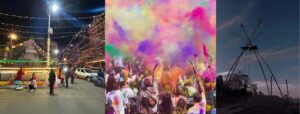Tucked away in the mystical landscapes of Nepal lies a realm where untamed wilderness reigns supreme. Welcome to Bardiya National Park, a captivating sanctuary that lures adventurers and nature enthusiasts into its pristine trails. With its remarkable biodiversity, unspoiled landscapes, and immersive experiences, Bardiya National Park is a true haven for those seeking an extraordinary rendezvous with nature.
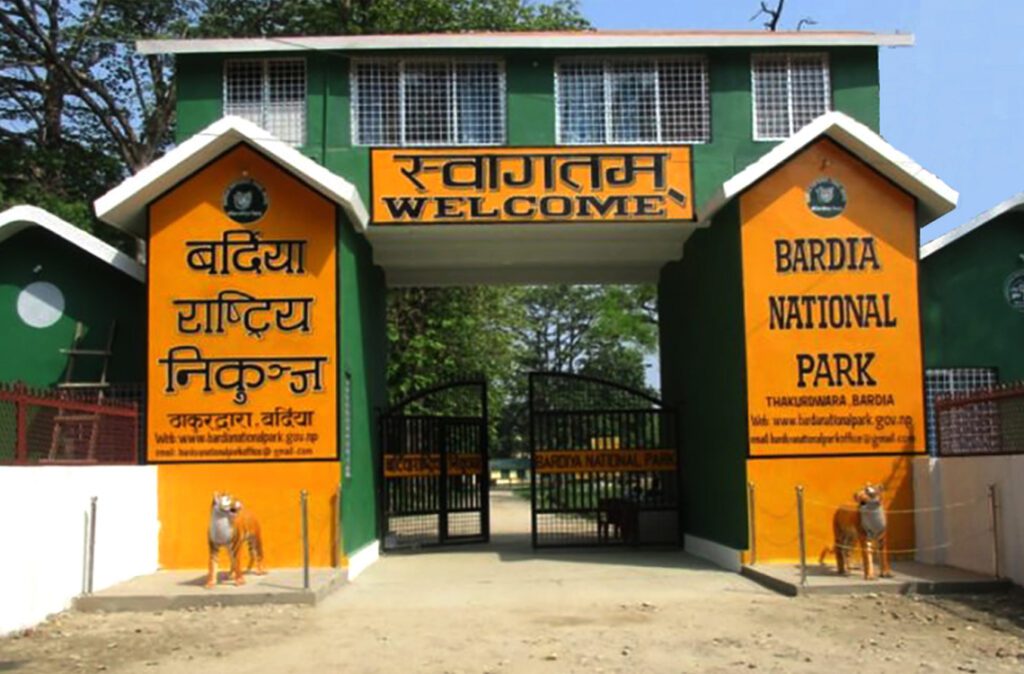
Join us as we embark on a virtual expedition through the hidden marvels of Bardiya National Park.
The Birth of Bardiya National Park
Bardiya National Park was established in 1988, under the National Parks and Wildlife Conservation Act of Nepal. The park covers an expansive area of approximately 968 square kilometers (374 square miles), making it one of the largest national parks in Nepal.
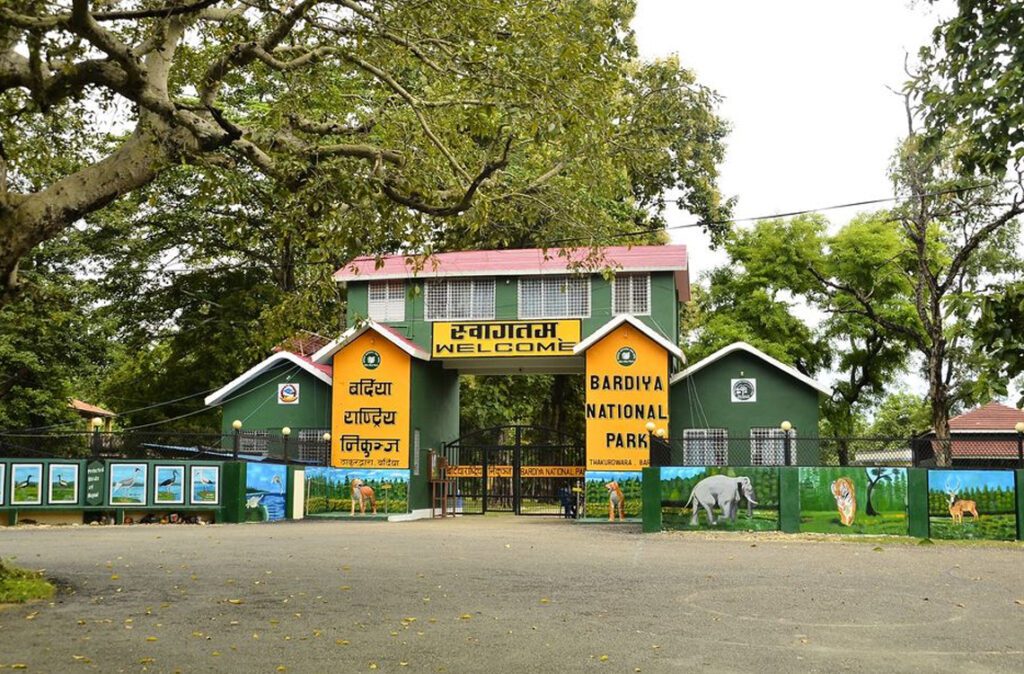
Its establishment aimed to preserve the unique biodiversity and ecosystems of the region while promoting research, education, and tourism.
Average Temperature and Weather Condition
Let’s explore the climate of Bardiya National Park and how it influences the experiences of visitors.
Summer (March to May)
Summer in Bardiya National Park is hot and dry. As temperatures soar, ranging between 30°C to 40°C, the park’s vegetation transforms. The grasslands and shrubs turn golden brown, creating a striking contrast against the clear blue sky.
Also Read: Best Things to Do in Bardiya National Park: Exploring the Enchanting Wilderness
Visitors should prepare for the scorching sun by wearing lightweight clothing, applying sunscreen, and staying hydrated.
Monsoon (June to September)
The monsoon season brings much-needed relief to the parched landscape. From June to September, Bardiya National Park receives a significant amount of rainfall, rejuvenating the flora and fauna. The temperature drops slightly, averaging around 25°C to 35°C.
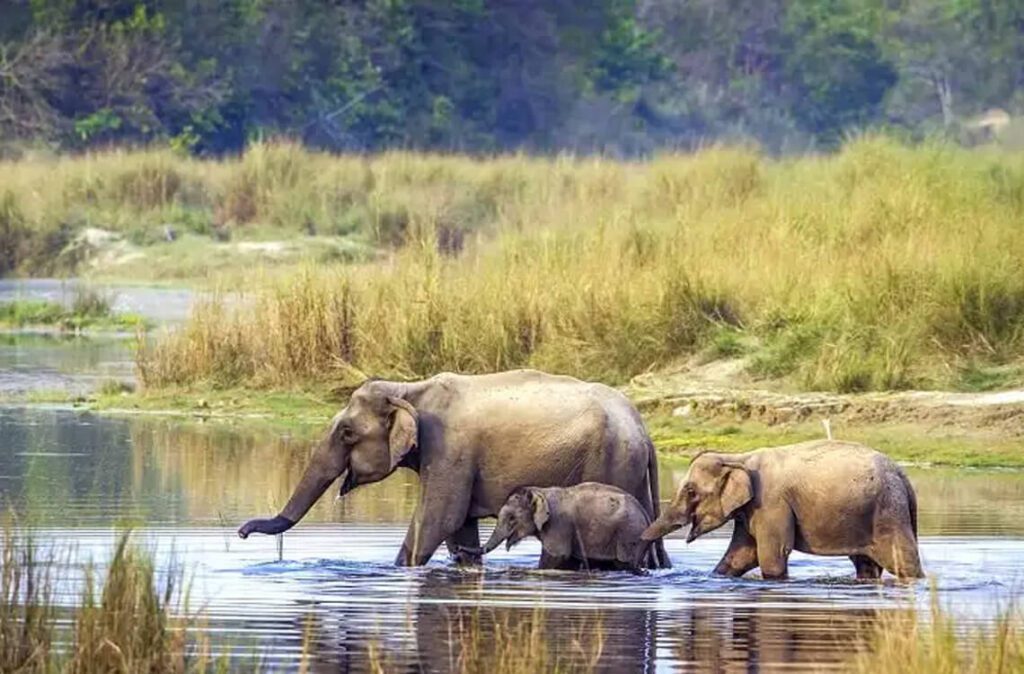
However, it’s important to note that heavy downpours can lead to muddy trails, making certain areas inaccessible. Visitors should pack rain gear and be prepared for occasional disruptions due to rain.
Autumn (October to November)
Autumn is considered one of the best times to visit Bardiya National Park. With the monsoon season retreating, the weather becomes pleasant, and the park showcases its true beauty.
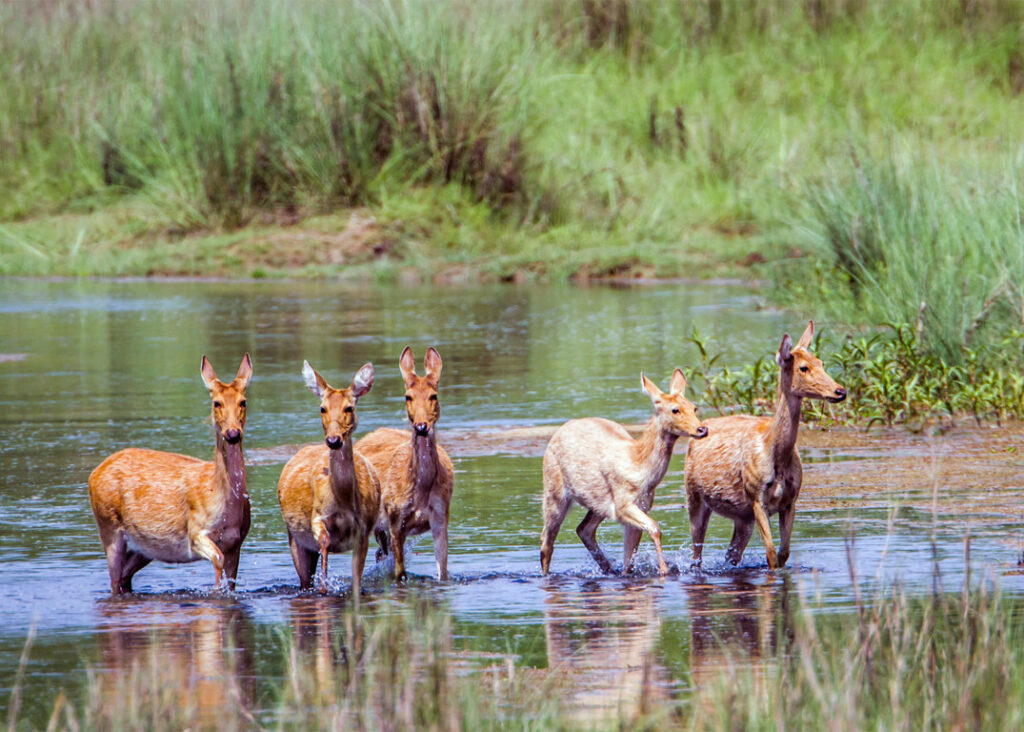
During this period, temperatures range between 20°C to 30°C, offering comfortable conditions for exploring the park. The landscapes are lush and vibrant, and the wildlife becomes more active, providing ample opportunities for wildlife spotting.
Winter (December to February)
Winter in Bardiya National Park brings cooler temperatures, particularly during the evenings and early mornings. The average temperature hovers between 10°C to 20°C.
While the days are generally mild and pleasant, the nights can get chilly. Visitors should pack warm clothing, including jackets and sweaters, to stay comfortable during their stay.
Highlights of Bardiya National Park
Bardiya National Park offers an extraordinary wilderness experience that leaves visitors in awe. With its vast expanses of pristine forests, diverse wildlife, and breathtaking landscapes, Bardiya National Park is a paradise for adventure seekers seeking an authentic encounter with nature. Let’s take a closer look at the highlights of Bardiya National Park.
Rich Biodiversity
Bardiya National Park boasts one of the richest concentrations of wildlife in Asia, making it a haven for biodiversity. The park is home to an impressive range of fauna, including endangered species such as Bengal tigers, one–horned rhinoceroses, wild elephants, and Gangetic dolphins.
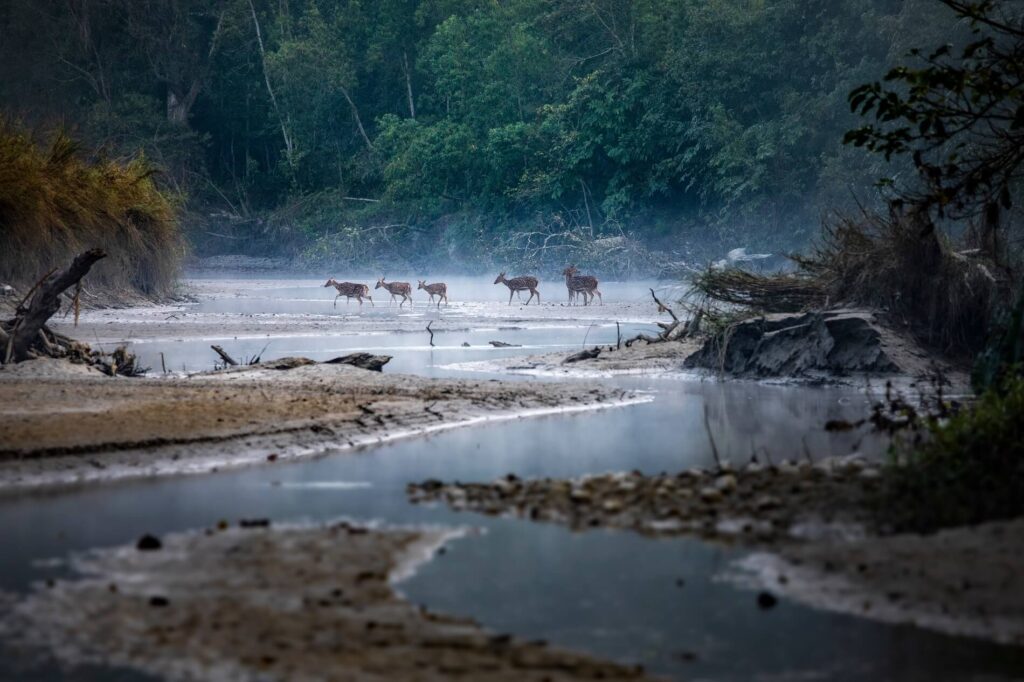
Bird enthusiasts will delight in the park’s diverse avian population, with over 230 species recorded, including the magnificent Bengal florican and Sarus crane. A safari through the park’s dense forests offers the chance to witness these incredible creatures in their natural habitats.
Jungle Safari Adventures
Embarking on a thrilling jungle safari is one of the best ways to explore the wonders of Bardiya National Park. Accompanied by experienced guides, visitors can venture deep into the heart of the park on elephant back or opt for a jeep safari.

As you traverse through the lush foliage and tranquil riverbanks, keep your eyes peeled for the chance to spot a variety of wildlife in their natural habitats.
Birdwatching Extravaganza
For bird enthusiasts, Bardiya National Park is a true paradise. With over 230 avian species recorded within its boundaries, including endangered and migratory birds, the park presents a captivating experience for birdwatchers of all levels.

Whether you’re strolling along the riverside or exploring the dense forests, you’ll be treated to the sight of vibrant plumage and melodic calls echoing through the trees.
Tharu Cultural Immersion
Adjacent to Bardiya National Park lies the Tharu community, an indigenous group known for its unique culture and traditions. Engage in a cultural exchange with the warm-hearted Tharu people, learn about their way of life, and witness vibrant performances of their traditional dances.

This interaction adds an enriching dimension to your visit, fostering a deeper understanding and appreciation for the local heritage.
Nature Walks and Hiking
Bardiya National Park offers nature enthusiasts a plethora of opportunities to connect with its unspoiled beauty. Guided nature walks and hiking trails take you through verdant forests, offering glimpses of the park’s incredible biodiversity.
You may also like: Kagbeni: Untouched Mystical realm of the Himalayas
Immerse yourself in the serene surroundings, breathe in the crisp forest air, and soak in the tranquility that only a place like Bardiya can provide.
River Rafting and Fishing
The Karnali River which flows through Bardiya National Park presents an exciting opportunity for river rafting enthusiasts. Hop aboard a raft and navigate the gushing rapids, surrounded by breathtaking landscapes and the thrill of adventure.
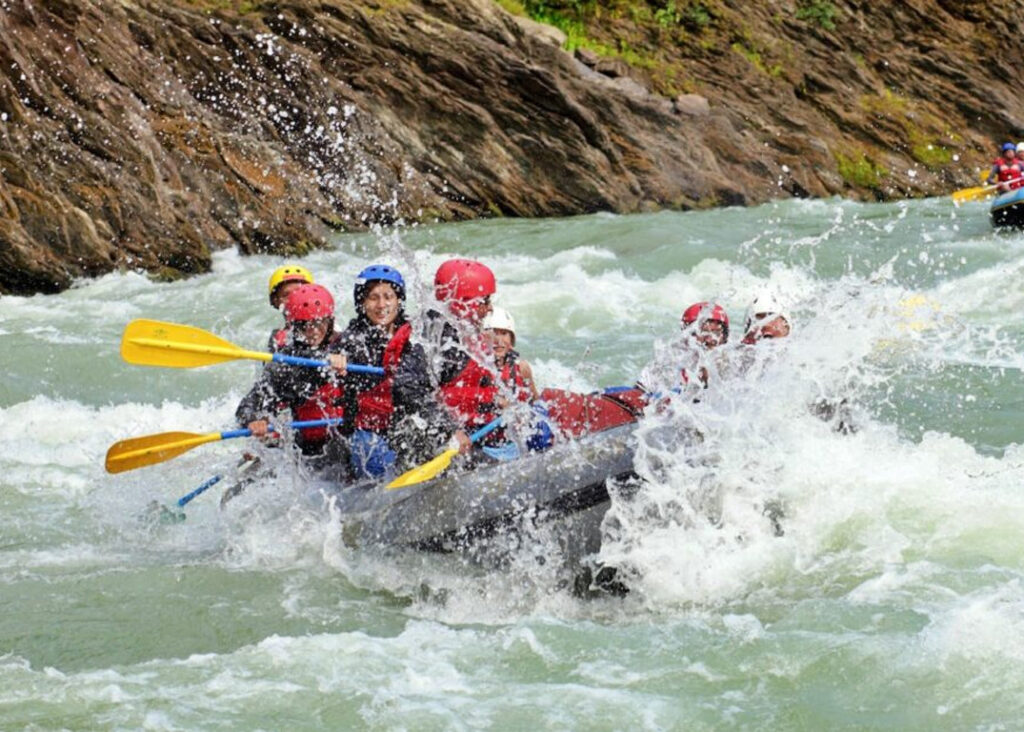
Moreover, the Karnali River is known for its abundance of fish making it a haven for fishing enthusiasts. Cast your line and try your luck at catching the famous Mahseer, a prized sport fish found in these waters.
Nature Photography and Wildlife Conservation
Bardiya National Park’s picturesque landscapes and diverse wildlife provide ample opportunities for nature photography. Capture stunning images of Royal Bengal tigers stealthily prowling through the tall grass, rhinoceroses basking in the sun, or vibrant bird species in flight.
By sharing your photographs, you can raise awareness about the importance of wildlife conservation and inspire others to protect these precious habitats.
Tharu Homestay Experience
For a truly immersive cultural experience, consider staying with a Tharu family in one of the nearby villages. Tharu homestays allow visitors to live alongside the locals gaining insights into their daily lives, traditions, and cuisine.
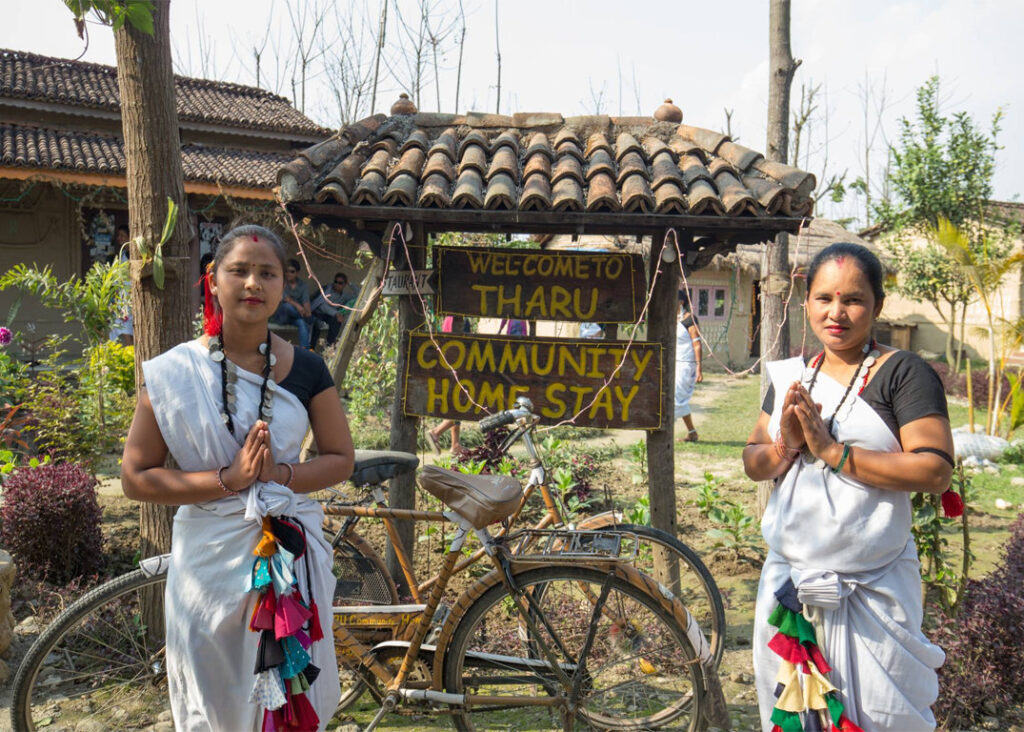
Participate in traditional activities, such as farming or handicraft making, and savor authentic Tharu dishes, offering a deeper understanding of the region’s cultural heritage and fostering meaningful connections.
Cost
Let’s take a look into the cost of exploring Bardiya National Park including the entrance fee, safari expenses, and accommodation options ensuring you have a comprehensive understanding of the expenses involved.
Entrance fee
To embark on your wildlife journey in Bardiya National Park, you must first pay an entrance fee. As of the latest information available, the entrance fee for international visitors is NPR 1500 per person per day.
Also Check: What makes Nepal different than other countries
It’s important to note that these fees may be subject to change so it’s advisable to check the official website or contact the park authorities for the most up-to-date information.
Safari Cost
Hopping on a safari in Bardiya National Park offers a chance to immerse yourself in the wonders of the wilderness. Safari packages are designed to cater to different interests and durations. These packages typically include activities such as exhilarating jungle walks, thrilling elephant rides, exciting jeep safaris, bird–watching expeditions, and serene canoeing journeys.
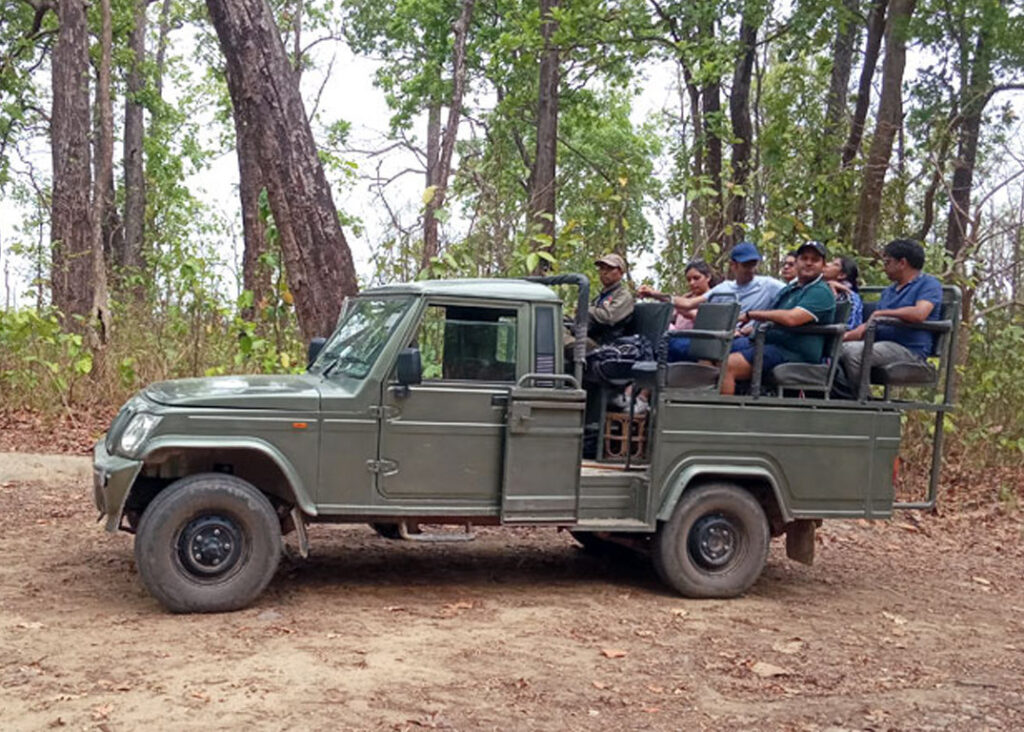
The cost of safari packages can vary depending on the duration, inclusions, and the range of activities on offer. Choose a package that aligns with your interests and budget.
Flora
Let’s take a look into the botanical marvels of this pristine wilderness.
The Floral Tapestry
Bardiya National Park boasts an extraordinary floral tapestry that is sure to mesmerize any nature lover. The park’s diverse ecosystem encompasses riverine forests, grasslands, and sal forests, creating the perfect conditions for a wide range of plant species to thrive.

As you venture deeper into the park, you’ll encounter a fascinating array of flora that adds color and life to the landscape.
Striking Wildflowers
The park’s meadows and grasslands burst into a riot of colors during the flowering season, showcasing a breathtaking display of wildflowers. Among the most prominent are the vibrant rhododendrons, Nepal’s national flower, with their fiery red, pink, and white blossoms.

The delicate orchids, including the endangered Blue Vanda, are a true spectacle to behold. These ethereal beauties can be found tucked away in the park’s dense forests, rewarding those lucky enough to spot them.
Towering Sal Trees
No discussion about the flora of Bardiya National Park would be complete without mentioning the magnificent sal trees. These towering giants dominate large sections of the park and provide vital habitats for numerous animal species.
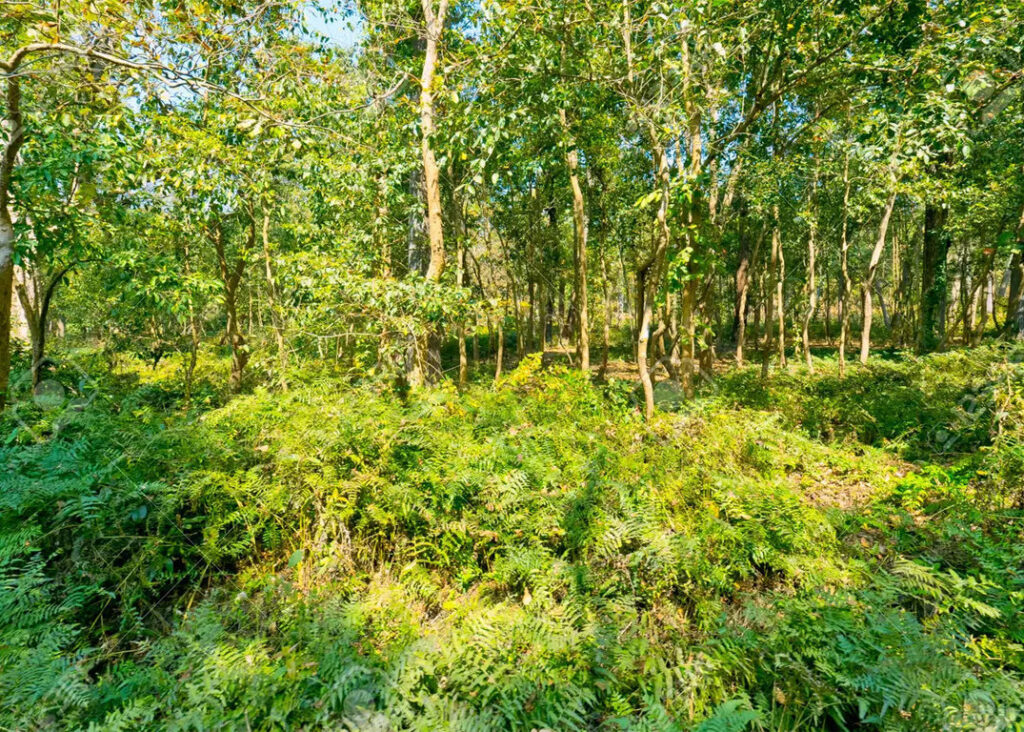
The sal trees with their impressive heights and broad canopies, create a tranquil atmosphere that invites visitors to immerse themselves in the serenity of the forest. Take a moment to marvel at the interplay of light and shadow as the sun’s rays filter through the dense foliage.
Medicinal Plants
Beyond their aesthetic appeal, the flora of Bardiya National Park offers invaluable medicinal properties. Indigenous communities residing in and around the park have long relied on traditional herbal remedies derived from these plants.
More: Chitwan National Park
The park is home to a wealth of medicinal species, including the Himalayan Yew, used in the production of anti–cancer drugs, and the Neem tree, renowned for its antibacterial and antifungal properties. Exploring the park’s flora can provide insights into the unique relationship between humans and plants.
Fauna
Let’s take a look into the captivating fauna that calls this national park home.
Royal Bengal Tiger
One of the crown jewels of Bardiya National Park is the Royal Bengal Tiger. This majestic creature known for its regal presence roams the dense forests of the park. Bardiya is one of the best places in the world to spot these elusive big cats thanks to its robust population.
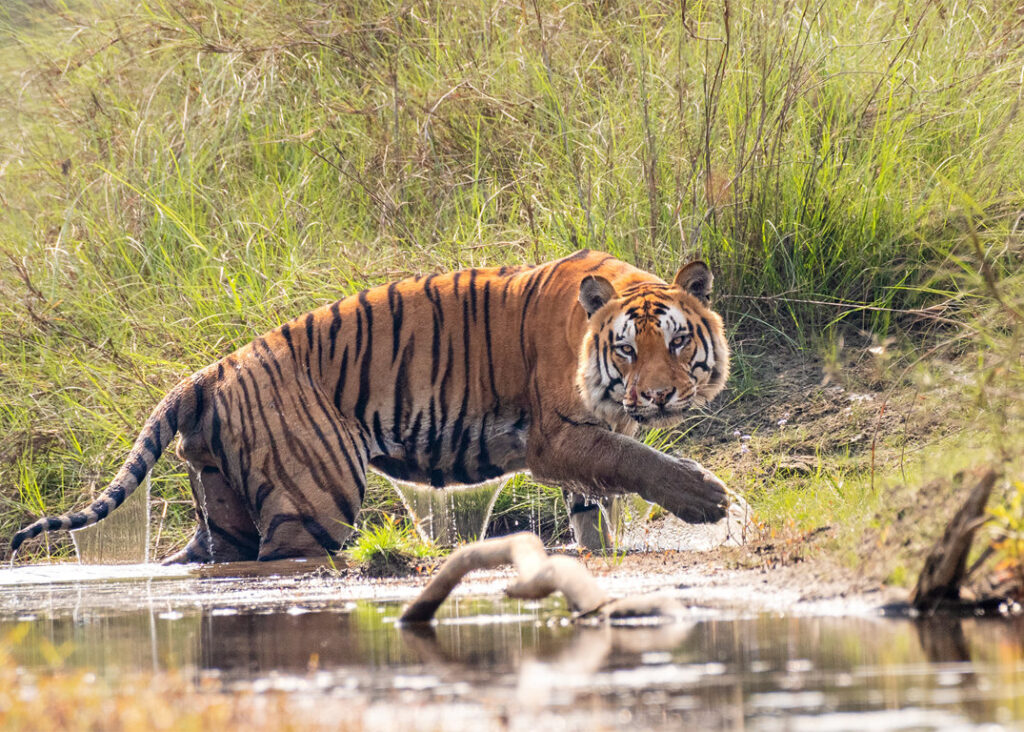
There are 125 Royal Bengal Tigers in Bardiya National Park. Imagine the thrill of witnessing a tiger prowling through the tall grass or taking a dip in one of the park’s tranquil rivers.
One-horned Rhinoceros
Prepare to be mesmerized by the sheer size and magnificence of the endangered one-horned rhinoceros (Rhinoceros unicornis). Bardiya National Park provides a haven for these incredible creatures, allowing them to thrive and multiply.

With their prehistoric appearance and distinctive horn, observing these gentle giants in their natural habitat is an unforgettable experience.
Asian Elephant
The gentle giants of Bardiya National Park Asian elephants are a sight to behold. These intelligent and sociable animals can often be seen bathing in the rivers or moving gracefully through the forest.
Witnessing a herd of elephants, led by a matriarch, is an awe-inspiring spectacle that will leave you with memories to cherish for a lifetime.
Gharial Crocodile
Venture along the riverbanks of Bardiya National Park and you may be lucky enough to encounter the fearsome-looking Gharial Crocodile. Known for its long, slender snout and sharp teeth, this unique reptile is a critically endangered species.
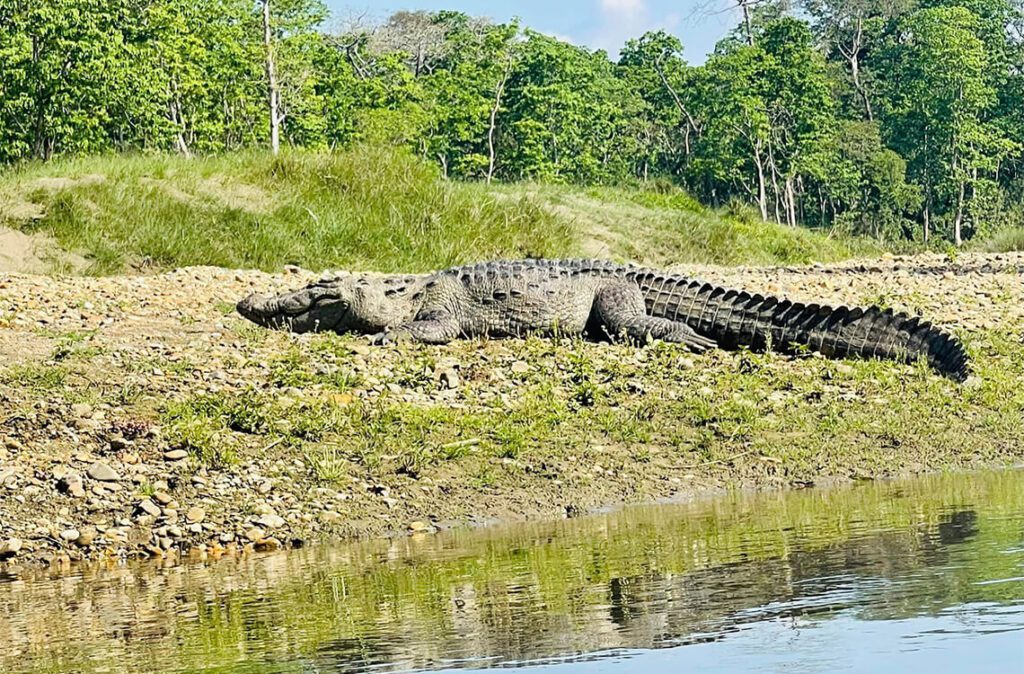
Observing them basking in the sun or gliding stealthily through the water is a thrilling experience, showcasing the incredible diversity of the park’s ecosystem.
Avian Delights
Bardiya National Park is a birdwatcher’s paradise, boasting over 230 avian species. From vibrant kingfishers to majestic raptors, the park offers a remarkable opportunity to witness a myriad of feathered wonders.
Keep your eyes peeled for the endangered Bengal florican or the elusive Sarus Crane, as they grace the wetlands and grasslands with their elegant presence.
Gangetic Dolphin
Venture along the pristine Karnali River that flows through Bardiya National Park, and you may catch a glimpse of the rare Gangetic Dolphin. Known for its long snout and graceful movements, this freshwater dolphin is an endangered species.
Read: Luxury Tour Packages for Couples in Nepal
Spotting these dolphins as they gracefully break the surface of the water is a magical experience.
Sloth Bear
Among the lesser-known inhabitants of Bardiya National Park is the adorable Sloth Bear. With its shaggy fur and distinctively long claws, this bear species spends its days foraging for food and climbing trees in search of honeycombs.

Spotting a Sloth Bear in the park’s forested areas is a delightful encounter.
Great Hornbill
Listen for the resonant call of the magnificent Great Hornbill echoing through the canopy of Bardiya National Park. This large, colorful bird with its distinctive casque atop its bill is a true symbol of the park’s avian diversity.
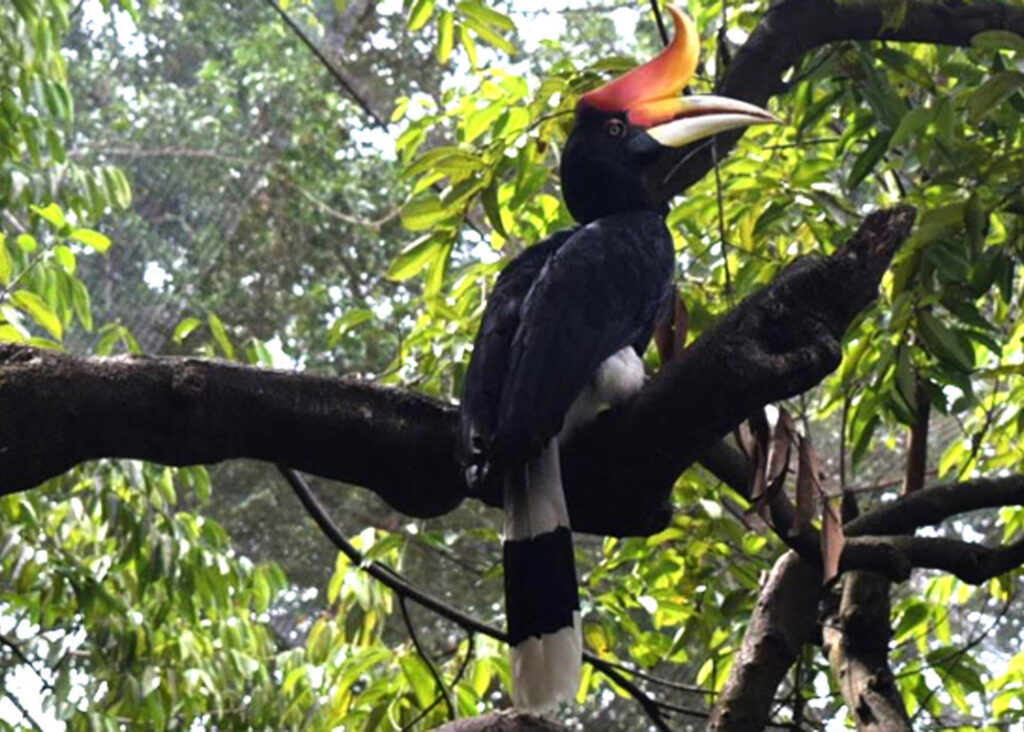
Observing these impressive birds in flight or perched on branches is a treat for birdwatchers and nature lovers alike.
Sambar Deer
Among the various deer species in Bardiya National Park, the Sambar Deer stands out with its large size and impressive antlers.
These majestic herbivores graze peacefully in the grasslands and forested areas of the park, adding to the enchanting tapestry of its fauna.
Leopard
While elusive, the stealthy Leopard also finds its home within the dense forests of Bardiya National Park. Known for its solitary nature and remarkable agility, the leopard represents the apex predator in the park’s ecosystem.
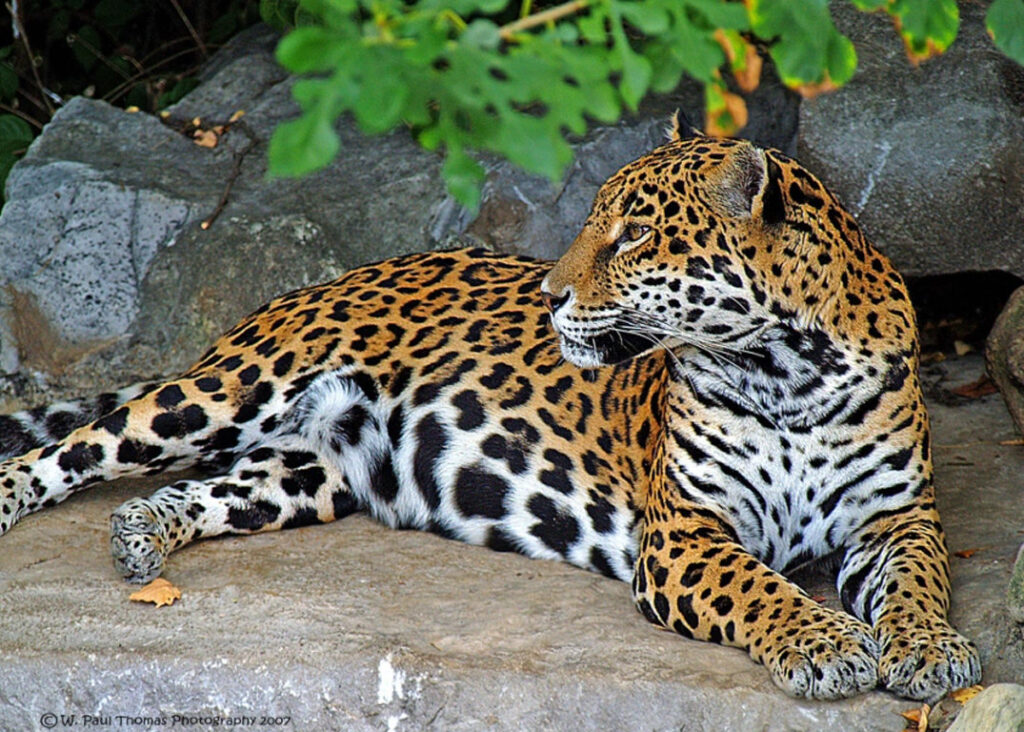
Spotting this elusive feline requires patience and a stroke of luck, but encountering one in its natural habitat is a truly extraordinary experience.
Accommodation
Let’s take a look at the remarkable accommodation options within Bardiya National Park.
Jungle Lodges
Tucked away amidst the dense forests, jungle lodges provide an authentic and immersive experience for nature lovers. These lodges are designed to blend harmoniously with the environment, allowing guests to feel at one with nature. Imagine waking up to the melodious calls of birds, stepping onto your private veranda, and being greeted by the sight of deer gracefully grazing nearby.
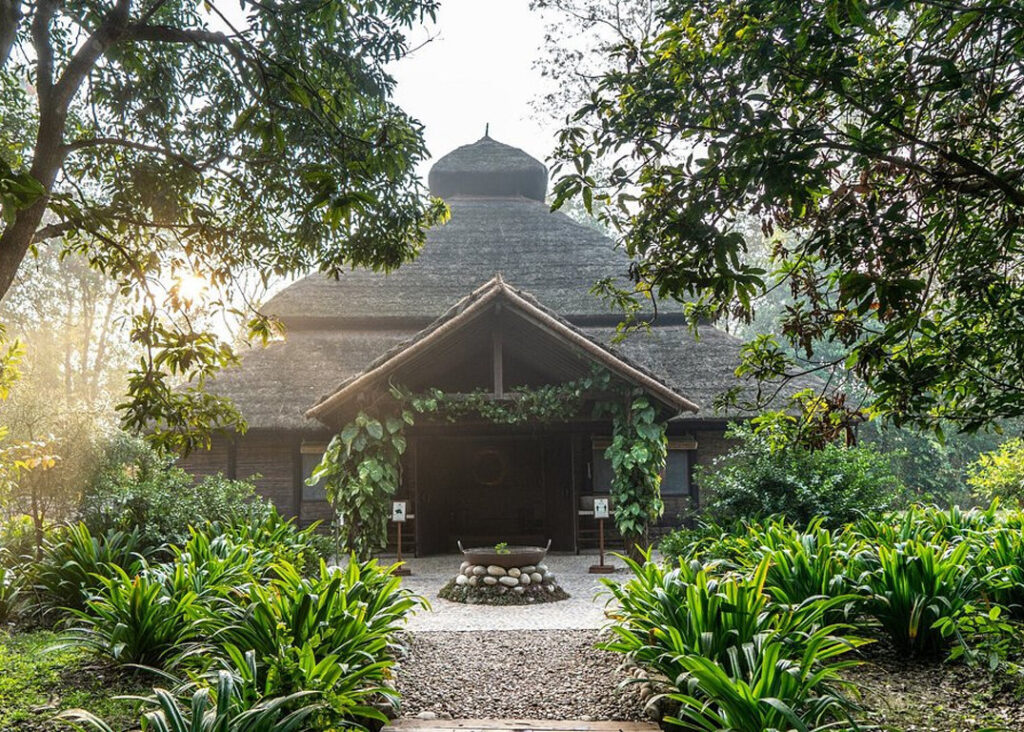
The lodges offer cozy rooms with modern amenities, delicious local cuisine, and knowledgeable guides who can lead you on thrilling jungle safaris.
Riverside Resorts
If you seek a tranquil retreat, look no further than the charming riverside resorts. Perched along the banks of the serene Karnali River, these resorts provide a picturesque setting to unwind and reconnect with nature. The soothing sound of flowing water, the cool breeze, and the panoramic views create a truly rejuvenating atmosphere.
Guests can choose from a range of accommodations, including well-appointed cottages or luxurious tents, each offering a unique experience. Stroll along the riverbanks, indulge in delectable local cuisine, or embark on a relaxing boat ride to witness the mesmerizing sunset over the water.
Eco-friendly Homestays
For those seeking an authentic cultural experience, eco-friendly homestays provide an excellent opportunity to interact with the local Tharu community. The Tharu people have lived in harmony with nature for generations and have a rich knowledge of the surrounding wildlife.
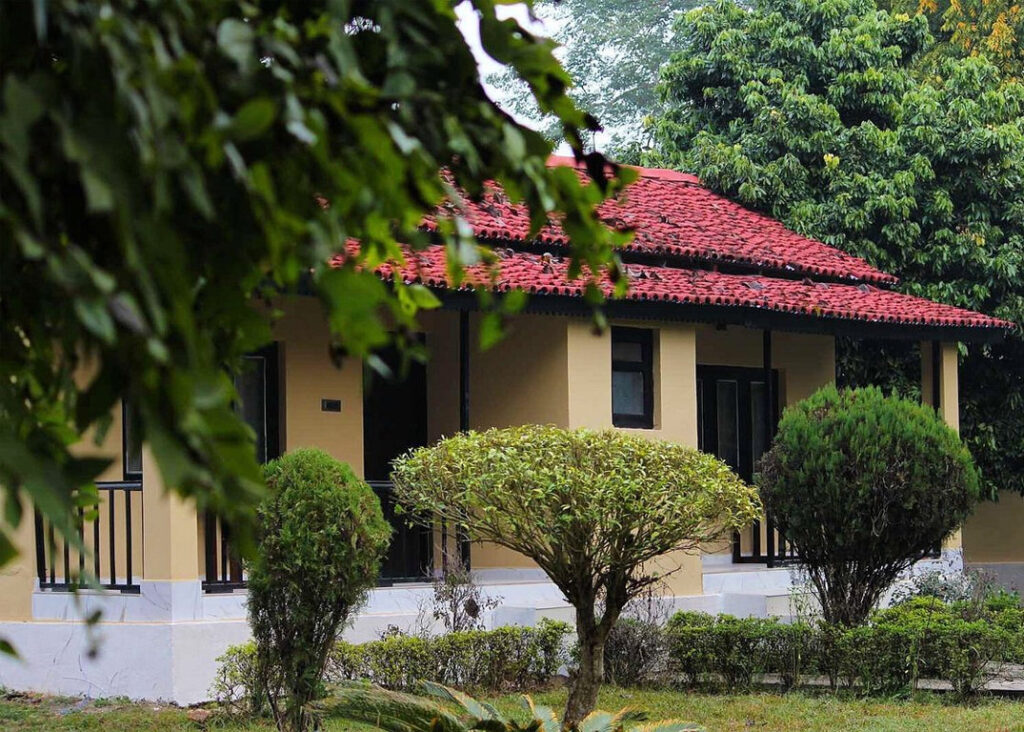
Staying in their traditional homes, adorned with vibrant artwork and rustic charm, allows you to immerse yourself in their culture and traditions. Experience their warm hospitality, savor traditional Tharu meals, and engage in folk dances and music around a crackling bonfire. It’s an unforgettable opportunity to gain insights into the local way of life.
Luxury Lodges
For those seeking a blend of opulence and wilderness, luxury lodges within Bardiya National Park offer an unparalleled experience. These lodges combine world-class amenities with a deep appreciation for nature, providing a lavish retreat in the heart of the untamed wilderness.
Located in secluded locations, these lodges boast spacious suites or private villas, elegantly designed with locally inspired decor and breathtaking views of the surrounding landscape.
Kathmandu to Bardiya National Park
Located in the western part of Nepal, Bardiya National Park is 569.3 kilometers away from Kathmandu. The journey takes you through diverse landscapes, allowing you to witness the country’s vibrant countryside.
Ways to Reach Bardiya National Park:
By Air
The quickest way to reach Bardiya National Park from Kathmandu is by air. Several domestic airlines operate regular flights from Kathmandu’s Tribhuvan International Airport to Nepalgunj Airport, the nearest airport to Bardiya National Park.
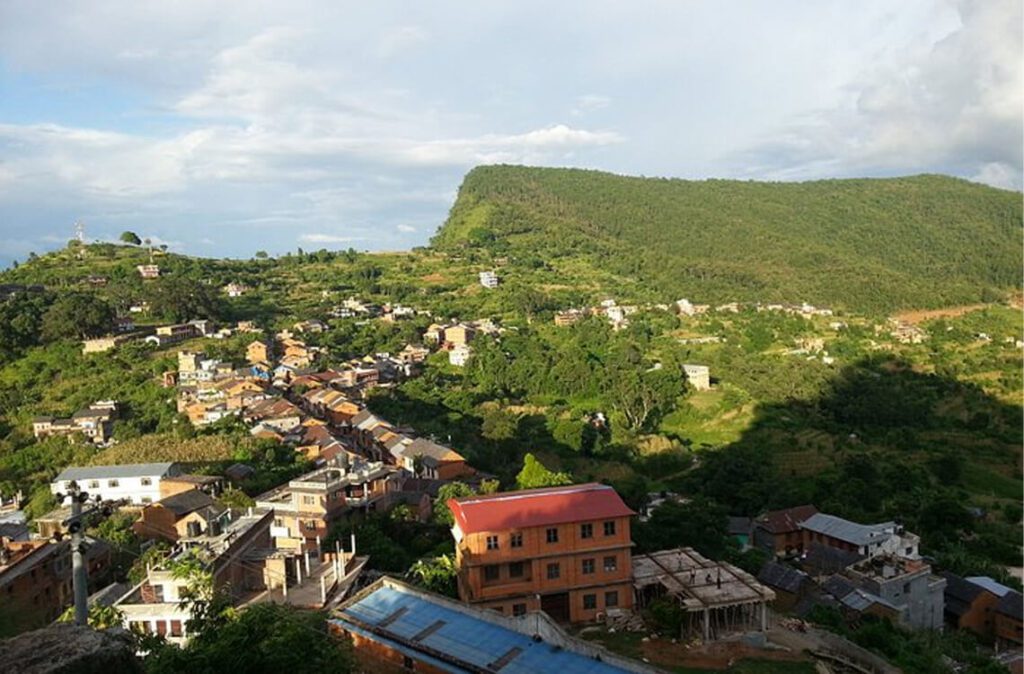
The flight takes around one hour, providing stunning aerial views of the Himalayas and the Terai region.
By Road
For those seeking a more adventurous and scenic journey, traveling by road is an excellent option. You can embark on an exciting road trip from Kathmandu to Bardiya National Park, enjoying the picturesque landscapes along the way.

The journey takes approximately 12-14 hours, depending on road conditions and traffic.
Private Vehicle
Renting a private vehicle, such as a car or jeep, allows you to have more flexibility during the trip. You can take breaks, explore nearby towns, and soak in the beautiful countryside.
The route takes you through the Mahendra Highway passing through cities like Butwal and Nepalgunj before reaching Bardiya National Park.
Public Bus
An affordable and popular option among budget travelers is taking a public bus from Kathmandu to Bardiya National Park. The journey may be longer, but it offers an opportunity to interact with locals and experience the authentic Nepali way of life.
Read: Busy Tourist Cities of Nepal
Regular buses operate from Kathmandu’s Gongabu Bus Park, and the journey includes multiple stops along the route.
Best time to visit Bardiya National Park
Let’s explore the seasonal wonders of Bardiya National Park and reveal the ideal time to embark on an unforgettable adventure.
Spring (March to May)
As winter relinquishes its grip, Bardiya National Park awakens to the vibrant colors and newfound energy of spring. During this season, the weather gradually warms up, creating a pleasant atmosphere for exploration. Springtime in Bardiya offers a sight to behold as the park transforms into a floral paradise. The trees and shrubs are adorned with blossoms, and the fragrant air fills your senses.

Bird enthusiasts will be in awe as they witness the migratory birds returning, including the majestic Bengal florican, the elusive Sarus crane, and a multitude of other avian species. Moreover, it is also an ideal time to spot rhinoceroses, deer, and elephants as they gather around water sources to quench their thirst.
Summer (June to August)
As the monsoon season rolls in, Bardiya National Park undergoes a dramatic transformation. The relentless rains breathe life into the park, infusing it with lush greenery and revitalizing its water bodies. While the heavy downpours may seem daunting, they bring about a surge in biodiversity. The park becomes a haven for reptiles, including the rare and endangered gharial, a species of crocodile.
Additionally, the forests resonate with the symphony of frogs, and the air is filled with the calls of countless insects and birds. While the weather can be unpredictable, the monsoon season offers a unique opportunity to witness the park’s raw and wild beauty.
Autumn (September to November)
Autumn is widely regarded as the best time to visit Bardiya National Park. The rains taper off, leaving behind rejuvenated landscapes and comfortably cool temperatures. The lush greenery continues to thrive, providing ample grazing opportunities for herbivores.

This abundance of prey attracts numerous predators, such as the elusive Bengal tiger and the endangered Asiatic wild dog, making it an excellent time for wildlife enthusiasts. Furthermore, the crystal-clear skies during autumn present incredible photographic opportunities, allowing you to capture the breathtaking beauty of the park.
Winter (December to February)
Winter in Bardiya National Park is characterized by cooler temperatures, but the park’s magic remains intact. With the vegetation thinning out, wildlife sightings become more frequent and accessible. The park’s iconic residents, including the one–horned rhinoceros, elephants, and deer, are often seen basking in the sun or congregating near the riverbanks.
Additionally, bird lovers will find themselves captivated by the presence of migratory species, including raptors and waterfowl. While the mornings and evenings can be chilly, the mild winter weather during the day allows for comfortable exploration.
Let our expert team at Asian Heritage Treks and Travel take care of everything — from guided tours to personalized packing tips and travel arrangements.
Plan an unforgettable journey






